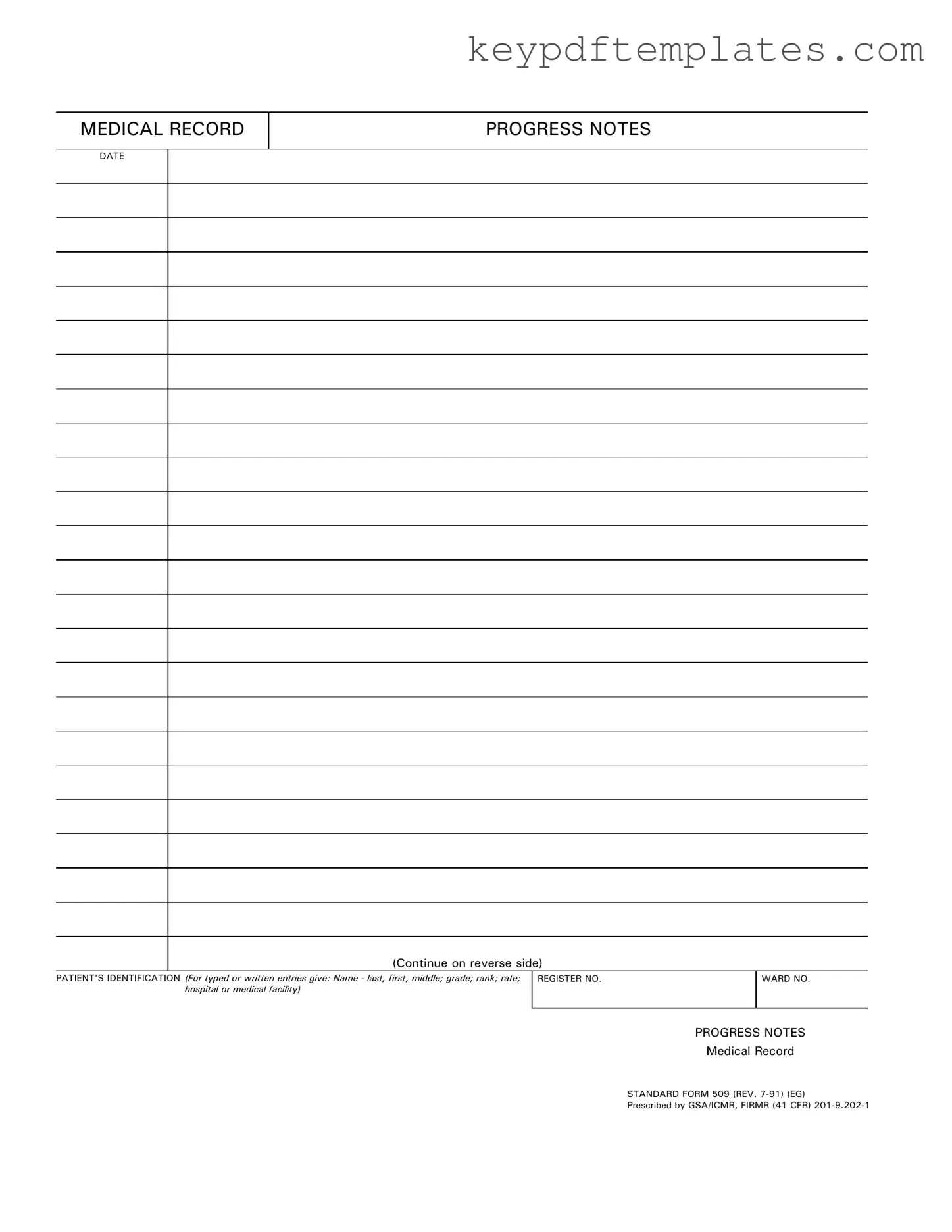Get Progress Notes Form
The Progress Notes form is a standardized document used in medical records to track patient care and treatment over time. It includes essential details such as the patient's identification, date, and specific notes about their progress. This form ensures that healthcare providers maintain accurate and consistent records for effective patient management.
Modify Document Online
